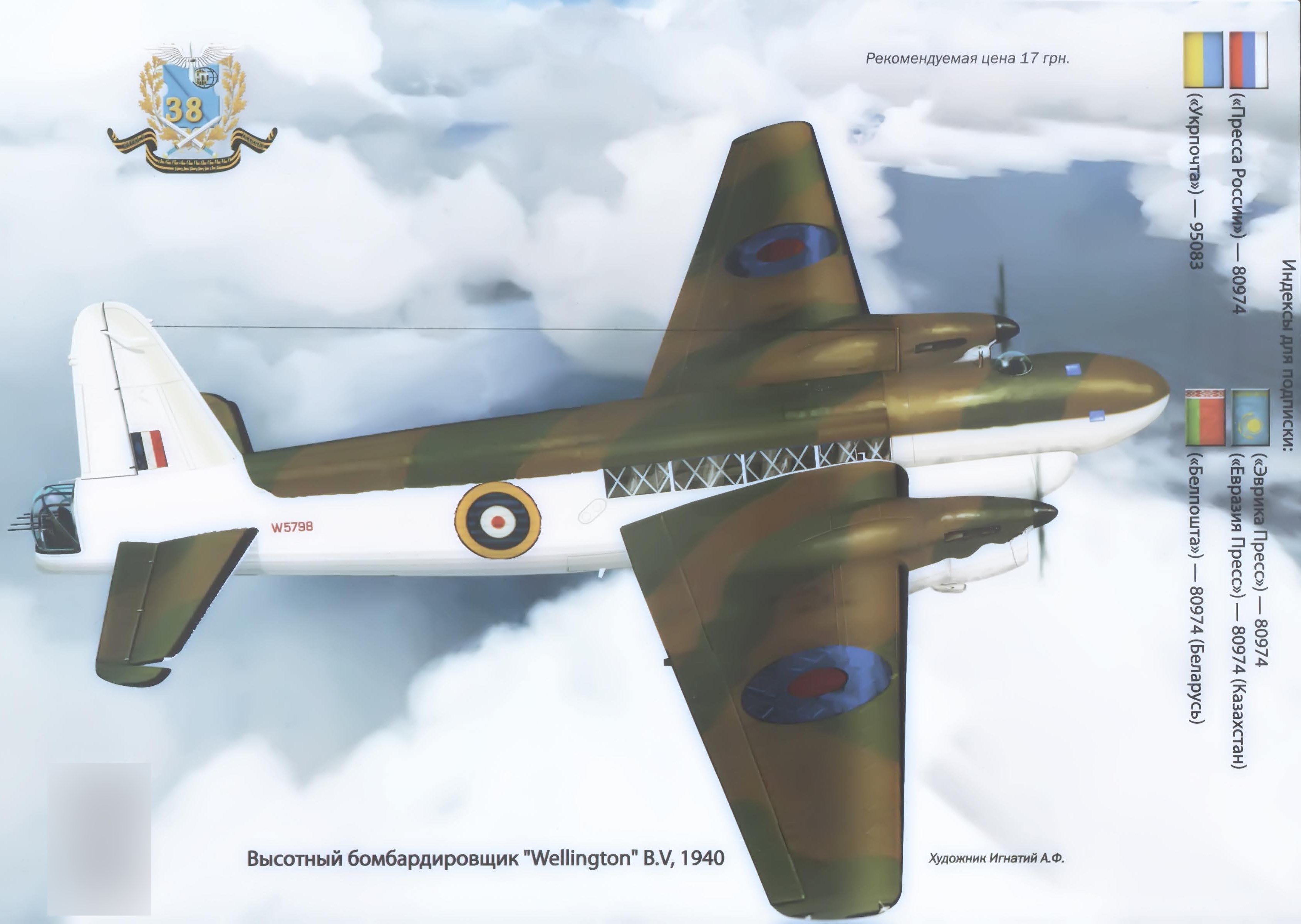
In response to Operational Requirement OR.94 calling for a
bomber capable of operating at a cruising height of 35,000 feet over 2,200
miles, Vickers proposed the Mk.V and Mk.VI variants of the Wellington, around
which Specifications B.23/39 and B.17/40 were written. The aircraft were fitted
with a pressurised cabin in the forward fuselage and ultimately a 12 feet
increase in wingspan. The two variants differed mainly in their powerplants,
with the Mk.V having the Hercules Mk.VIII and the Mk.VI the Merlin 60;
prototypes of both were built at Vickers’ Experimental Section site at
Foxwarren, Cobham, a few miles from Weybridge. They first flew in 1940 and 1941
respectively, but a change in air staff policy led to second thoughts about the
value of high-flying bombers and consequently only the Mk.VI was ordered into
limited production, with sixty-four being built at Weybridge between May 1942
and January 1943 and assembled at Smith’s Lawn temporary airfield in Windsor
Great Park. Testing at A&AEE Boscombe Down commenced with W5795 but on 12
July 1942 the aircraft dived at high speed from altitude, breaking up before it
reached the ground, with the loss of Sqn Ldr Cyril Colmore and his crew. The
probable cause was the failure of a propeller blade which penetrated the
pressure cabin and hit the pilot. In December 1942, a production Mk.VI DR484
was used to demonstrate its true performance and included a cruising altitude
of 34,000 feet (which the aircraft took fifty minutes to reach), an estimated
range of 1,100 miles, and a height over the target of 37,100 feet.
The aircraft was operated by a crew of four; pilot,
navigator, bomb aimer and wireless operator, all housed in the forward pressure
cabin. The need for air gunners was removed as the turrets were to be operated
remotely from the cabin and sighted via a periscope. In the event the only
service use was with one flight of 109 Squadron which received four aircraft
(W5801, W5802, DR480, DR484) as GEE trainers and for Oboe trials in concert
with Mk.ICs T2513 and X9678 of the Telecommunications Flying Unit (TFU)
Defford, Worcestershire with trials also being flown from Tempsford. The
remainder of the Mk.VI fleet was struck off charge and scrapped between March
1943 and August 1944.
A Mk.VI DR480 was to be have been fitted with a British
Thomson-Houston built W.2B jet engine in November 1942, but these trials were
delayed until 26 January 1943 and the aircraft was re-allocated for use at TFU
Defford without being converted
Type 407 and Type 421 Wellington Mark V were the second and
first prototypes respectively: three were built, designed for pressurised,
high-altitude operations using turbocharged Hercules VIII engines.
Wellington Mark VI
The Mk VI was developed at the same time as the Mk V, but
using Rolls Royce Merlin 60 engines, providing 1,600 hp. These proved more
successful than the Hercules III engines used in the Mk V, but high-altitude
flight provided problems of its own, as many of the liquids used in the
aircraft froze in the extreme cold. Sixty four Mk VIs were produced, and it was
intended to use them with pathfinder squadrons to mark targets for the main
bomber force, but by the time the Mk VI was ready for service the Mosquito had
appeared, and was very obviously better suited to the role. The Mark VIs never
saw combat, though two were flown by a service squadron for a short time,
presumably as operational evaluation. Most of the Mark VI bombers were
converted to “Wellington Mark VIG” trainers for the Gee radio
precision bombing system. The surviving Mk VIs were scrapping in 1943.
Mk.V Type 407, 421, 426, 436, 440, 443 – 3 built
Hercules III 1,425 hp. High-altitude bomber to operate up to
40,000 ft. Prototypes R3298 & R3299 first flown August 1940. One further
aircraft W5766. Type 443 one aircraft for Hercules VIII tests
Mk.VI Type 431, 439, 442, 443, 449 – 64 built
Wing span 86 ft 2 in length 61 ft 9 in height 17 ft 8 in,
gross weight 30,450 lb, service ceiling 38,500 ft, range 2,275 miles with 1,500
lb bomb load. Merlin 60 1,600 hp. High-altitude bomber. Prototype W5795 plus 63
production aircraft, some used as GEE trainers by one flight of 109 Squadron
which received 4 aircraft